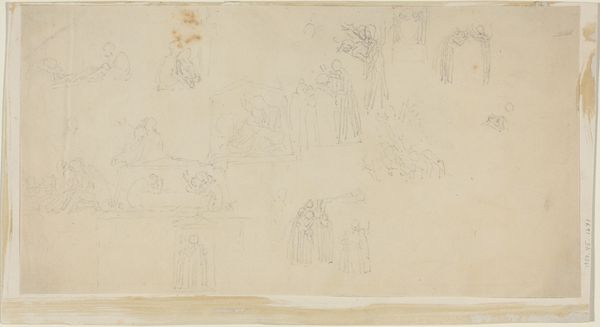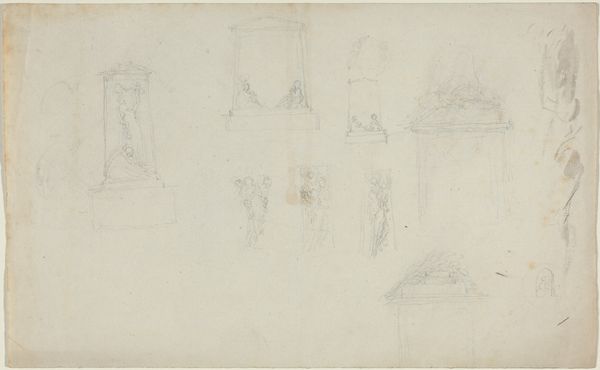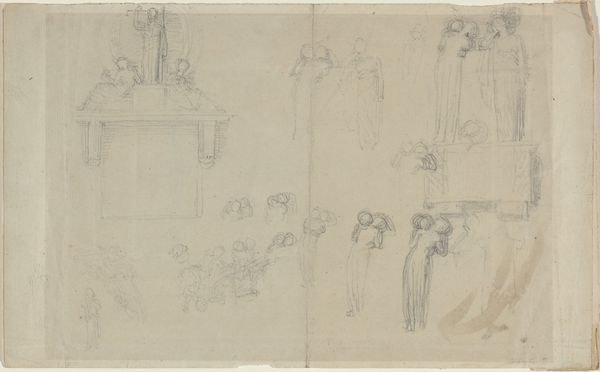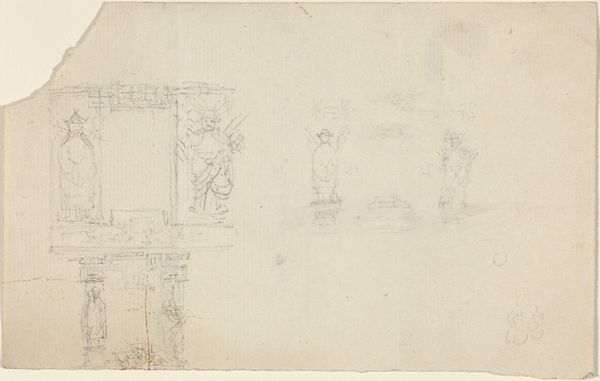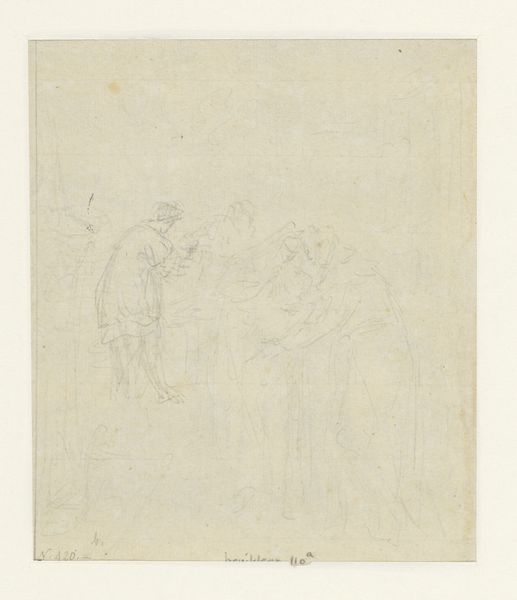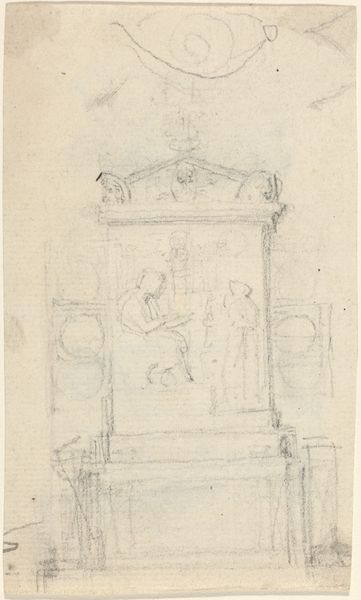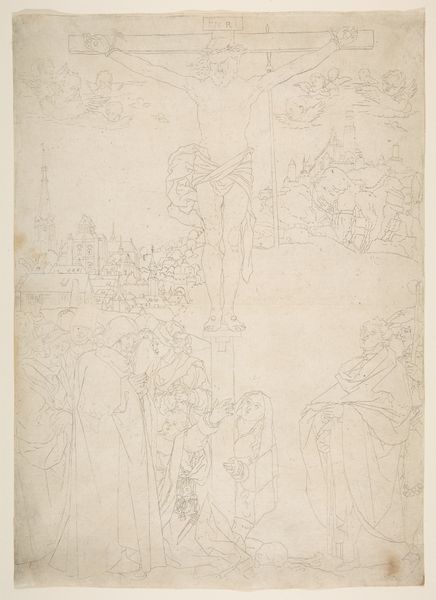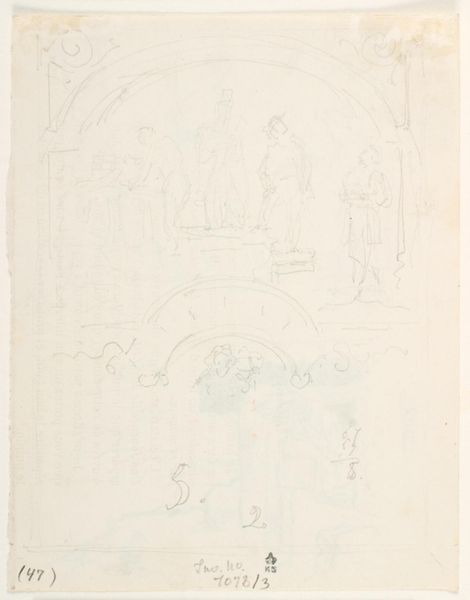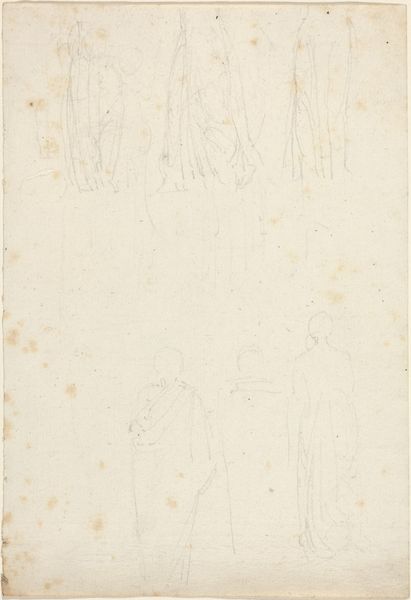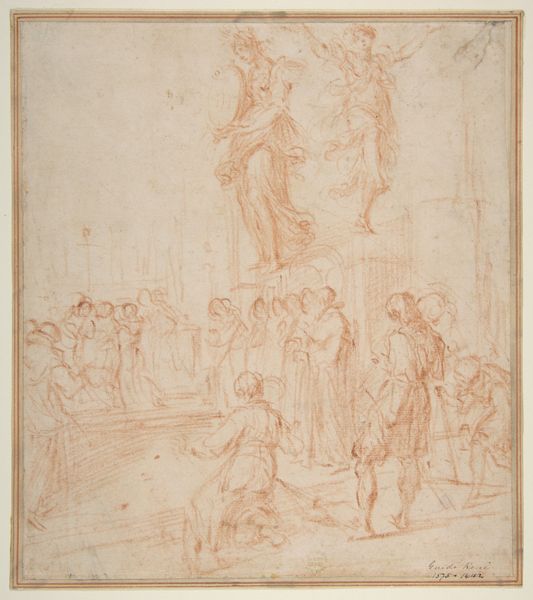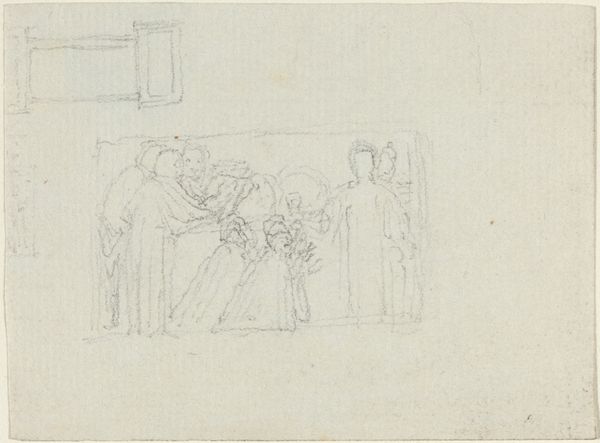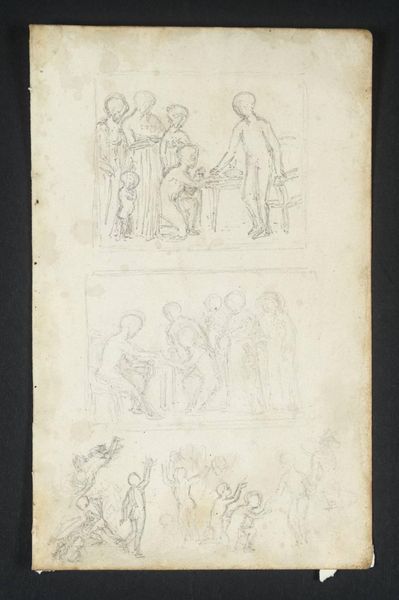![Sheet of Sketches [recto and verso] by John Flaxman](/_next/image?url=https%3A%2F%2Fd2w8kbdekdi1gv.cloudfront.net%2FeyJidWNrZXQiOiAiYXJ0ZXJhLWltYWdlcy1idWNrZXQiLCAia2V5IjogImFydHdvcmtzL2NmYmNmOTczLTBlYjctNGUzNi1hNmYzLWEzMzlmY2I0OWRmYS9jZmJjZjk3My0wZWI3LTRlMzYtYTZmMy1hMzM5ZmNiNDlkZmFfZnVsbC5qcGciLCAiZWRpdHMiOiB7InJlc2l6ZSI6IHsid2lkdGgiOiAxOTIwLCAiaGVpZ2h0IjogMTkyMCwgImZpdCI6ICJpbnNpZGUifX19&w=3840&q=75)
drawing
#
photo of handprinted image
#
drawing
#
toned paper
#
light pencil work
#
ink paper printed
#
incomplete sketchy
#
ink drawing experimentation
#
underpainting
#
watercolour bleed
#
watercolour illustration
#
watercolor
Dimensions: overall: 20 x 31.8 cm (7 7/8 x 12 1/2 in.)
Copyright: National Gallery of Art: CC0 1.0
Editor: So, we're looking at a "Sheet of Sketches" by John Flaxman, a recto and verso drawing, materials unspecified, although they appear to be ink and possibly watercolour on paper. It’s all rather faint, isn't it? Quite a ghostly set of figures. What catches your eye here? Curator: I notice first the use of seemingly inexpensive materials – toned paper, pencil, maybe some ink, watercolour. Flaxman wasn't investing in precious pigments here, was he? It points towards the sketch as a workspace, a place for labour and process, not necessarily a finalized, marketed product. We see evidence of repetitive action, a sort of material probing. What do you make of that apparent experimentation? Editor: I suppose it shows that art-making isn't always about perfect images. He’s exploring different poses, trying things out... so almost like he’s testing the limits of his own skill and understanding. Curator: Precisely. The imperfections and the incompleteness are actually quite revealing. Look closely, and you’ll see how the light pencil work establishes an underpainting and how the ink drawing experiments and watercolour bleed reveal more than the image they attempt to describe. Flaxman isn’t hiding his methods here; the labour of creation is made visible. Also, who was this art *for*? Not really for public display as it is presented, so what kind of patronage was Flaxman working with at this stage? Editor: Interesting! So you're suggesting the VALUE isn’t just in the final picture, but also in the labour, the act of creation itself? Something perhaps even radical in elevating process over outcome? Curator: Exactly. We see the artist working, problem-solving, consuming materials, refining his concepts... all crucial aspects of artistic production and all essential components of the history and evolution of Art. Think about the social implications. What class of people was consuming Flaxman's drawings and how did they obtain those materials at the time. Editor: This definitely gives me a whole new perspective. I'll certainly view sketchbooks with new eyes now. Curator: Indeed. Considering the social context alongside materials and process gives us a richer appreciation, revealing something profound in what might seem like a simple sketch.
Comments
No comments
Be the first to comment and join the conversation on the ultimate creative platform.
